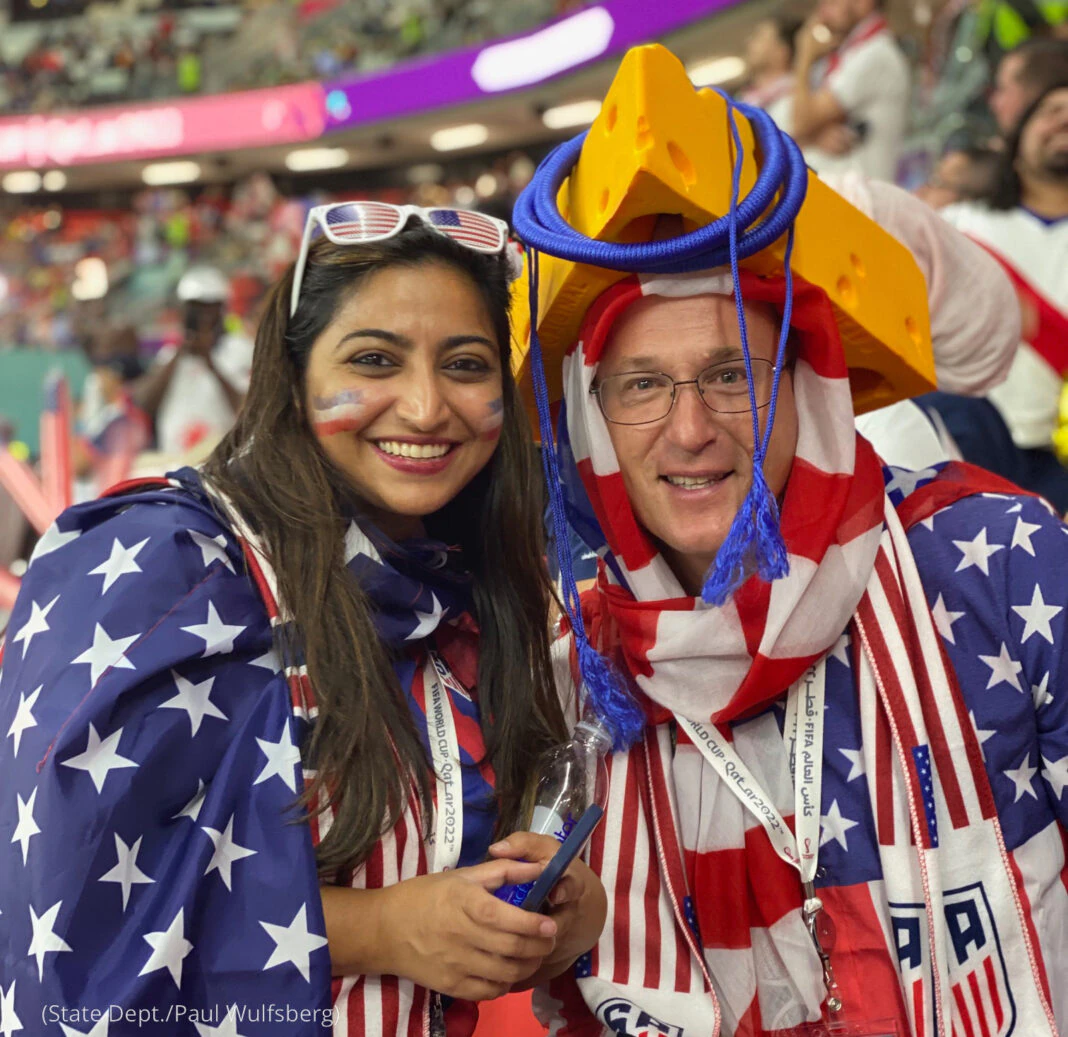Tens of thousands of U.S. soccer fans traveled to Qatar for the 2022 World Cup. But the ways they celebrate the world’s most popular sport — even what team they cheered — are as diverse as their home country, fans said.
“We met Iranian fans last night from Ohio. We met Mexican fans from Texas,” Chase Kania of Seattle said in Doha. “That all speaks to our unique culture.”
Kania is one of the estimated 50,000 soccer fans from the United States attending the World Cup held November 20–December 18 in Doha. As of November 27, U.S. fans represented 7% of visitors for the tournament, the third-largest contingent behind Saudi Arabia and India, according to news reports.
While soccer’s popularity in the United States has soared in recent decades, U.S. fans say the sport’s U.S. culture draws heavily from traditions of other countries where soccer — or football — has long been a leading national pastime.
“We’ll have a chant that is a German, northern European chant, and we’ll have a chant that is South American,” Kania said of soccer fans in his hometown of Seattle. But “we’re doing it in a uniquely American way.”
To Kania, embracing, even borrowing, traditions from other countries’ fans feels natural. Since the U.S. is known as a melting pot because of its mix of cultures, Kania says; “I would expect our soccer culture to be no different.”
Shawn Allen, who credits growing up in a largely Hispanic Southern California neighbourhood with fostering his love of soccer, says some U.S. soccer fans, as relative newcomers to the sport, are more reserved than their international counterparts.
“We probably have a ways to go in terms of being good fans for soccer,” Allen said, riding a bus to the U.S. match against Iran with boisterous fans of the Iranian team. “We could work on our chants.” The U.S. team, whose players are as diverse as their fans, defeated Iran 1–0 before being eliminated in the round of 16 in a 3–1 loss to the Netherlands on December 3.
The U.S. men’s national soccer team (USMNT) includes forward Jesús Ferreira, born in Colombia, and defender Sergiño Dest, born in the Netherlands, as well as players whose families hail from countries including El Salvador, Japan and Liberia. “The diversity of this team is the diversity of America,” USMNT Coach Gregg Berhalter told the Washington Post.
While U.S. fans in Doha take pride in U.S. soccer’s diverse influences, the youth of the men’s national team makes Americans optimistic about future tournaments. The U.S. team is the second-youngest of 32 teams at the World Cup, according to news reports.
“We’re going to make a good run this year, but in four years it will be really exciting,” said Tyler Kirchner, a former soccer coach from Nebraska, now serving in the U.S. military.
Kania also feels good about the U.S. teams prospects in 2026 when the United States, Canada and Mexico jointly host the World Cup. “We’re making up ground very fast,” Kania said. “When we host the World Cup … we’re winning it.”











